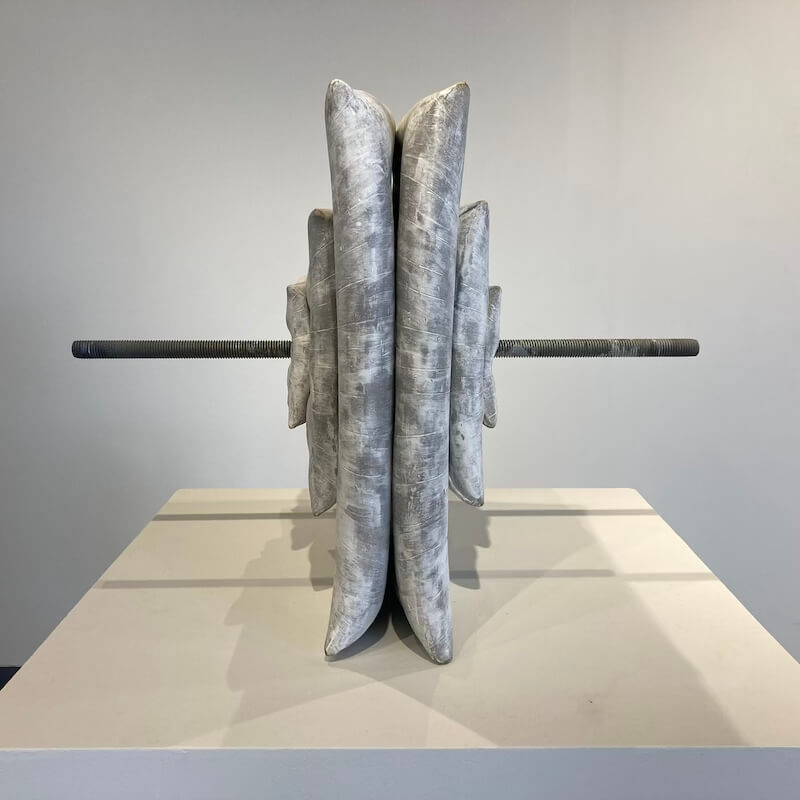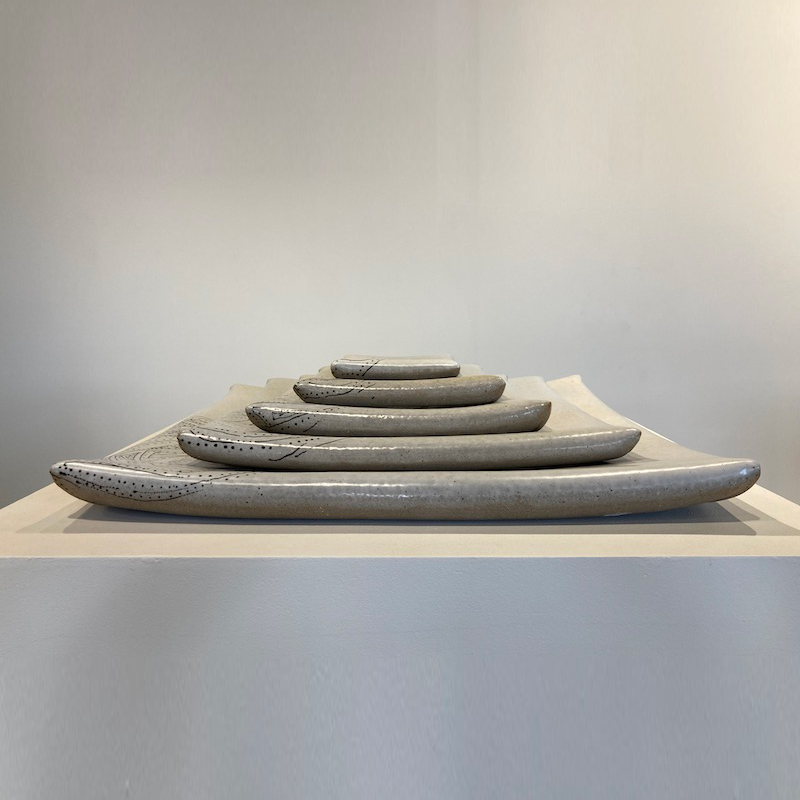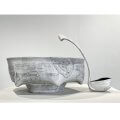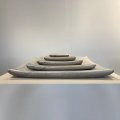
Red Lodge Clay Center – Short-Term Resident (AIA) 2024
Chrissy Pinelli Trout is originally from northeastern Ohio. She received her B.F.A with a concentration in ceramics from Miami University in Oxford, Ohio in 2004. She is currently an instructor and Director of Operations at Queen City Clay in Cincinnati, where she lives with her husband and two children. Chrissy has been with QCC since 2005, and during her time there has been invested in developing classes, supporting the studio’s community of members and students, and working to improve and expand the educational experiences that QCC offers.
Chrissy’s personal work has evolved over the years from sculptural figurative pieces to functional slab-built forms. She enjoys experimenting with multiple surfacing techniques, as her work tends to cycle based on what she’s currently teaching. She has taught numerous classes and workshops. Recent exhibitions of note include Strictly Functional (2021), Queen City Survey (NCECA 2023), & Ohio Artist Registry 2024 Juried Exhibition.
My current body of work has developed over time from experimentation with darting and folding thin slab forms. I find joy in little details, like how altering the shape or size of the pieces I’m cutting out of the clay ever so slightly can have a big impact on the resulting form. With a nod to the reference of sewing patterns, I often show the viewer where I’ve cut the clay apart and “sewn” it back together through hand painted stitch marks. Opting for soft, quiet surfaces, such as a satin-matte glaze or terra sigillata, allows me to showcase the form without the distraction of an overly complicated surface. I want the user to notice the subtle curves and changes in direction that result from the alterations and experience how that may fit in their hand or interact with a tabletop, encouraging a desire to touch.
Recently I’m becoming more interested in the idea of form fighting function in my work. We see ceramic objects all the time that one wouldn’t actually “use”, though they may assume the form of a utilitarian object. So why assume that form in the first place? What does it mean for something to be functional? How can I play with the boundary between a functional and sculptural object? When does a typically utilitarian ceramic piece cross that line into non-functional? How much variation will be tolerated? As a maker of handbuilt functional pots these questions are always in the back of my mind. The object itself dictates how much I really care if it is exceedingly functional. Mugs, for example, must function well and be pleasing to hold and use on a daily basis. A handbuilt pitcher, however, is contemporarily rarely used for its historical purpose. With such a form I can take the liberty to focus entirely on the shape without much concern for how well it functions as an actual pitcher. I’m fascinated with the idea of making a form that looks as though it may be useful, such as a vase, and then closing off the top…. or better yet… providing a small, impractical opening, encouraging the viewer to question whether there is a function to the piece or not. As soon as we can access the interior space, or view an object as a vessel in any way, our minds try to assign a function to it. What could it be used for? What would I do with it?










